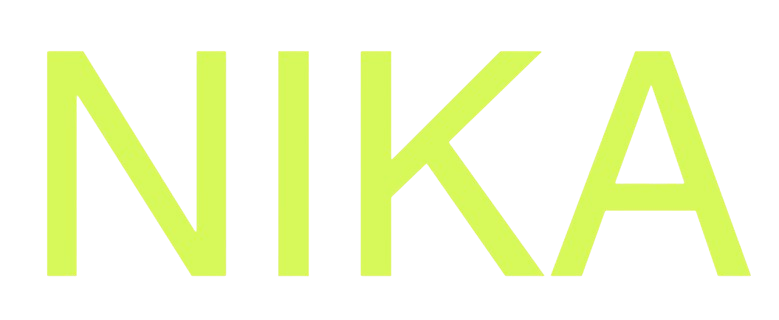import { Map, TileLayer, GeoJSON, Popup } from 'react-leaflet';
import { useEffect, useState } from 'react';
import { Feature, FeatureCollection, Geometry } from 'geojson';
interface SpatialAnalysisProps {
data: FeatureCollection<Geometry>;
analysisType: 'hotspot' | 'clustering' | 'interpolation';
parameters: {
variable: string;
method: string;
threshold?: number;
};
}
export const SpatialAnalysisMap: React.FC<SpatialAnalysisProps> = ({
data,
analysisType,
parameters
}) => {
const [analysisResults, setAnalysisResults] = useState<FeatureCollection | null>(null);
const [loading, setLoading] = useState(false);
const [error, setError] = useState<string | null>(null);
useEffect(() => {
const performAnalysis = async () => {
setLoading(true);
setError(null);
try {
const response = await fetch('/api/spatial-analysis', {
method: 'POST',
headers: {
'Content-Type': 'application/json',
},
body: JSON.stringify({
data,
analysisType,
parameters
})
});
if (!response.ok) {
throw new Error(`Analysis failed: ${response.statusText}`);
}
const results = await response.json();
setAnalysisResults(results);
} catch (err) {
setError(err instanceof Error ? err.message : 'Unknown error occurred');
} finally {
setLoading(false);
}
};
if (data && data.features.length > 0) {
performAnalysis();
}
}, [data, analysisType, parameters]);
const getStyle = (feature: Feature) => {
const value = feature.properties?.[parameters.variable];
if (!value) return { fillColor: '#ccc', weight: 1, opacity: 1, color: 'white' };
// Dynamic color scaling based on data values
const colors = ['#fee5d9', '#fcae91', '#fb6a4a', '#de2d26', '#a50f15'];
const maxVal = Math.max(...data.features.map(f => f.properties?.[parameters.variable] || 0));
const colorIndex = Math.floor((value / maxVal) * (colors.length - 1));
return {
fillColor: colors[colorIndex],
weight: 2,
opacity: 1,
color: 'white',
fillOpacity: 0.7
};
};
if (loading) {
return (
<div className="flex items-center justify-center h-64">
<div className="animate-spin rounded-full h-8 w-8 border-b-2 border-blue-600"></div>
<span className="ml-2">Performing spatial analysis...</span>
</div>
);
}
if (error) {
return (
<div className="bg-red-50 border border-red-200 rounded-md p-4">
<div className="flex">
<div className="text-red-400">
<svg className="h-5 w-5" viewBox="0 0 20 20" fill="currentColor">
<path fillRule="evenodd" d="M10 18a8 8 0 100-16 8 8 0 000 16zM8.707 7.293a1 1 0 00-1.414 1.414L8.586 10l-1.293 1.293a1 1 0 101.414 1.414L10 11.414l1.293 1.293a1 1 0 001.414-1.414L11.414 10l1.293-1.293a1 1 0 00-1.414-1.414L10 8.586 8.707 7.293z" clipRule="evenodd" />
</svg>
</div>
<div className="ml-3">
<h3 className="text-sm font-medium text-red-800">Analysis Error</h3>
<p className="text-sm text-red-700 mt-1">{error}</p>
</div>
</div>
</div>
);
}
return (
<div className="relative">
<Map
center={[39.8283, -98.5795]}
zoom={4}
className="h-96 w-full rounded-lg shadow-lg"
>
<TileLayer
url="https://{s}.tile.openstreetmap.org/{z}/{x}/{y}.png"
attribution='© <a href="https://www.openstreetmap.org/copyright">OpenStreetMap</a> contributors'
/>
{analysisResults && (
<GeoJSON
data={analysisResults}
style={getStyle}
onEachFeature={(feature, layer) => {
const value = feature.properties?.[parameters.variable];
if (value !== undefined) {
layer.bindPopup(`
<div class="p-2">
<h3 class="font-semibold">${feature.properties?.name || 'Location'}</h3>
<p class="text-sm text-gray-600">
${parameters.variable}: ${value.toLocaleString()}
</p>
</div>
`);
}
}}
/>
)}
</Map>
{analysisResults && (
<div className="mt-4 p-4 bg-gray-50 rounded-lg">
<h3 className="text-lg font-semibold mb-2">Analysis Summary</h3>
<div className="grid grid-cols-2 gap-4 text-sm">
<div>
<span className="font-medium">Features Analyzed:</span> {analysisResults.features.length}
</div>
<div>
<span className="font-medium">Analysis Type:</span> {analysisType}
</div>
<div>
<span className="font-medium">Method:</span> {parameters.method}
</div>
<div>
<span className="font-medium">Variable:</span> {parameters.variable}
</div>
</div>
</div>
)}
</div>
);
};
##### Map Creation
- **Interactive Maps**: Exceptional React-Leaflet and Mapbox implementations
- **Custom Components**: Sophisticated reusable mapping components
- **Performance Optimization**: Advanced rendering optimizations
- **User Experience**: Intuitive and responsive map interfaces
##### Data Analysis
- **Statistical Analysis**: Comprehensive statistical methods
- **Machine Learning**: Advanced ML model integration
- **Data Visualization**: Sophisticated chart and graph generation
- **Insight Generation**: Deep data interpretation and insights
##### SQL Execution
- **Query Optimization**: Exceptional performance tuning
- **Complex Analytics**: Advanced analytical queries
- **Data Modeling**: Sophisticated database design
- **Performance Monitoring**: Comprehensive query analysis
### GPT-5 Mini
**Best for**: Balanced performance and cost, general-purpose tasks
#### Key Capabilities
- **Balanced Performance**: Good quality with reasonable speed
- **Cost Efficiency**: Affordable for most use cases
- **Reliability**: Consistent performance across tasks
- **Versatility**: Handles diverse task types effectively
#### Performance in Nika Tasks
##### Coding
- **Quality**: Good code generation with proper structure
- **Speed**: Fast response times for most tasks
- **Documentation**: Adequate comments and documentation
- **Best For**: Standard application development
##### Map Creation
- **Standard Maps**: Good quality for common visualizations
- **Performance**: Efficient rendering for typical datasets
- **Styling**: Effective visual design
- **Best For**: Regular mapping applications
##### Data Analysis
- **Standard Analysis**: Good for routine analytical tasks
- **Speed**: Fast processing for common operations
- **Interpretation**: Adequate result explanation
- **Best For**: Regular reporting and analysis
##### SQL Execution
- **Standard Queries**: Good performance on typical queries
- **Basic Optimization**: Adequate query tuning
- **Error Handling**: Good error management
- **Best For**: Routine database operations
## Use Case Recommendations
### Choose GPT-4.1 When:
- **Complex Applications**: Sophisticated web applications and dashboards
- **Advanced Analysis**: Research-level data analysis
- **Production Systems**: Critical business applications
- **Innovation**: Cutting-edge features and capabilities
- **Code Quality**: High-quality, maintainable code
### Choose GPT-4.1 Mini When:
- **Standard Applications**: Common business applications
- **Cost Optimization**: Budget-conscious projects
- **Quick Development**: Rapid prototyping and development
- **Regular Tasks**: Routine analysis and reporting
- **Team Development**: Collaborative development environments
## Configuration Examples
### GPT-4.1 Configuration
```javascript
const gpt5Config = {
provider: 'openai',
model: 'gpt-5',
temperature: 0.2,
maxTokens: 4096,
systemPrompt: `You are an expert full-stack developer specializing in geospatial applications.
Create high-quality, production-ready code with comprehensive error handling,
performance optimization, and excellent user experience.`,
features: {
creativity: 'high',
codeQuality: 'excellent',
analysis: 'comprehensive'
}
};

